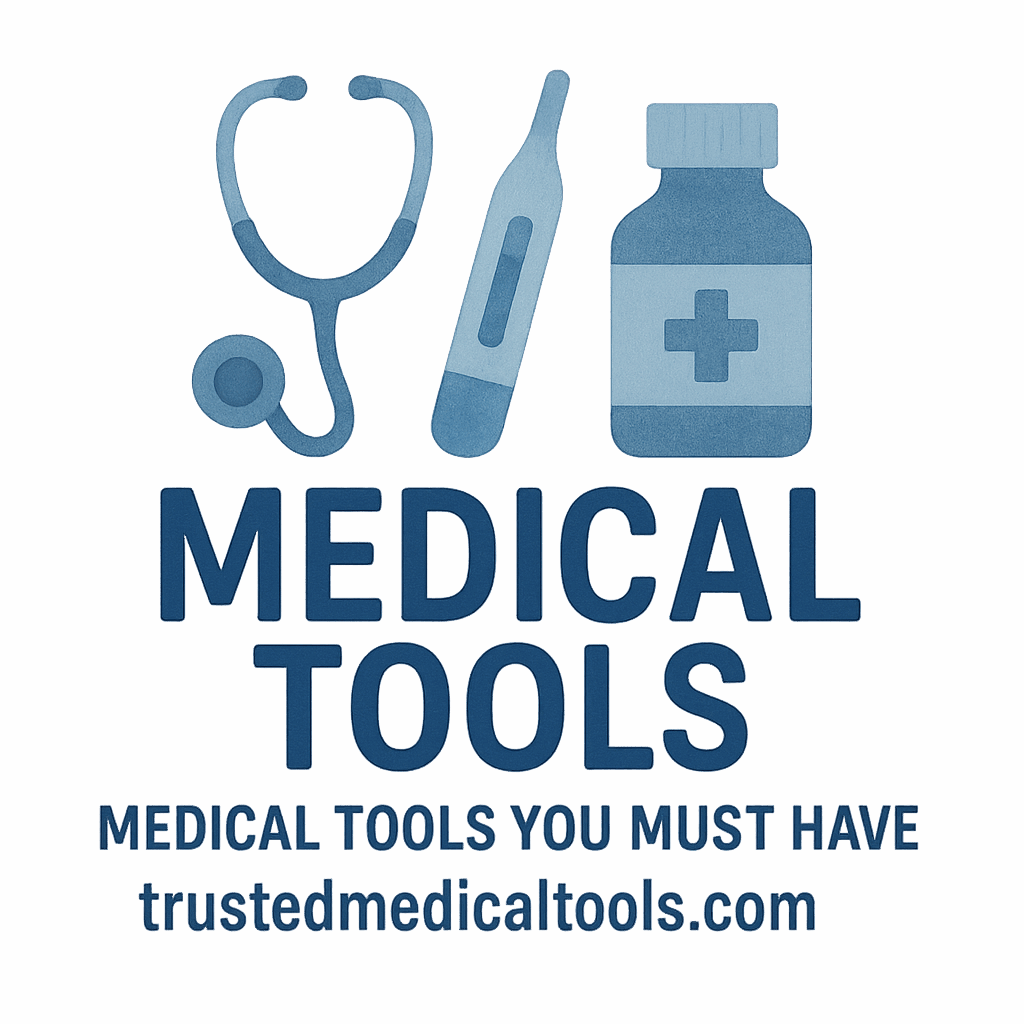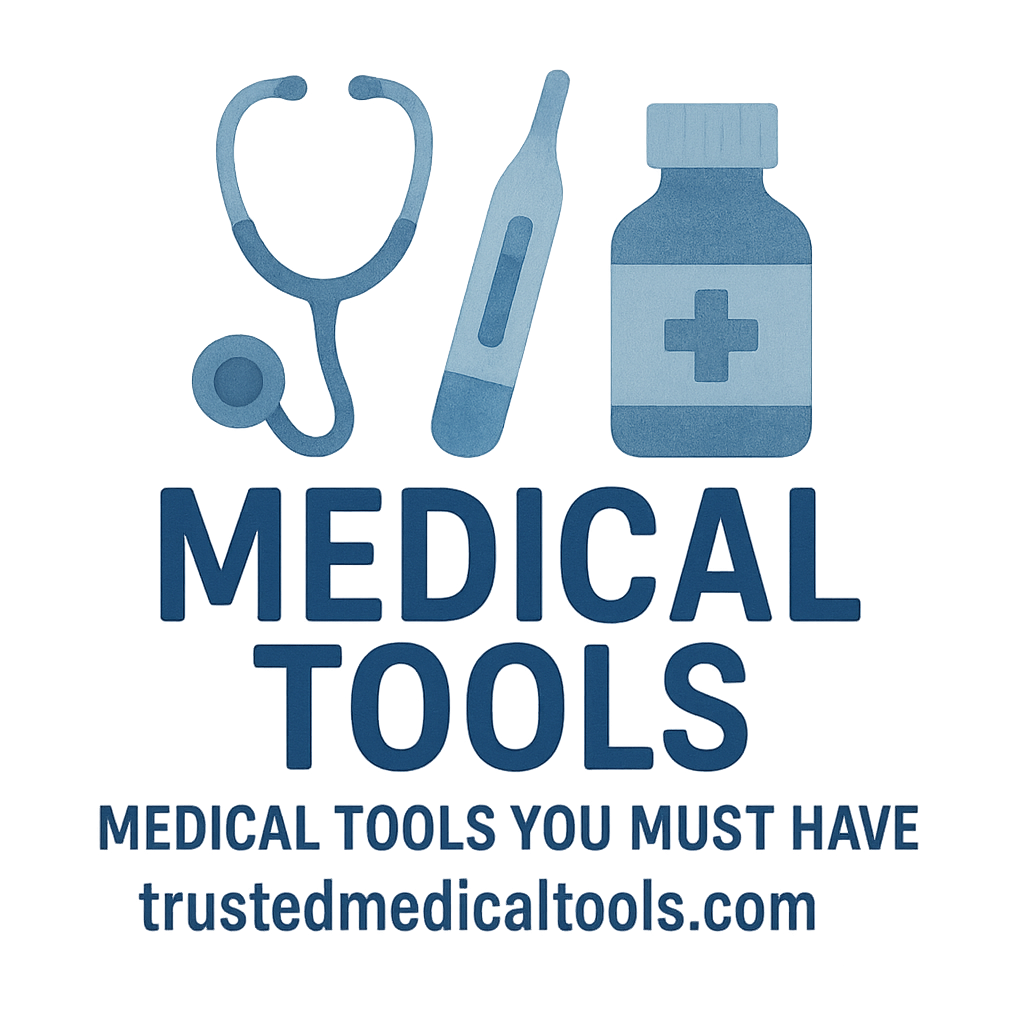Having a well-stocked first aid kit in your home is essential for handling emergencies, from minor cuts and bruises to more serious injuries. Whether you’re preparing for a home injury or an unexpected medical situation, knowing which first aid tools to keep on hand can make all the difference. In this article, we’ll go over the 10 first aid medical tools you absolutely need in your home kit to stay safe and prepared.
Introduction to First Aid Tools for Your Home
Emergencies can happen at any time. From a simple scrape to a more severe injury, knowing how to respond quickly and effectively can be lifesaving. But having the right tools on hand is just as crucial. A first aid kit with the right medical tools can help you stabilize a loved one until professional medical help arrives, preventing the situation from worsening.
H3: Why You Need a Home First Aid Kit
A first aid kit at home is your first line of defense in an emergency. It’s not just for when accidents happen but for peace of mind knowing you’re ready for whatever comes. If someone gets hurt, the quicker you can act, the better the outcome. Having the right tools within arm’s reach means you’re prepared for common household injuries, allergic reactions, burns, and more.
H3: What to Consider When Building Your First Aid Kit
When putting together your home first aid kit, think about the types of injuries and health issues you might encounter most often. If you have small children or pets, for example, you may need tools for handling cuts, scrapes, and burns more frequently. On the other hand, a family with elderly members may need medical tools that focus more on heart conditions or medication management.
For a detailed guide on building your first aid kit, visit First Aid Buying Guide.
H2: Top 10 First Aid Medical Tools for Your Home Kit
H3: 1. Adhesive Bandages
Adhesive bandages are a staple in every first aid kit. These small, sticky strips come in various sizes to cover wounds, from minor cuts and blisters to abrasions. They’re easy to use and help prevent infection by keeping bacteria and dirt away from the injury.
H4: Importance of Adhesive Bandages
Having a variety of adhesive bandages ensures you can treat different types of cuts, from tiny nicks to larger scrapes. They’re also handy for covering blisters caused by shoes or friction. Check out more on how these bandages can be used in Basic Tools.

H3: 2. Antiseptic Solution
Antiseptic solution is an absolute necessity for any first aid kit. It’s used to clean wounds and prevent infections by killing harmful bacteria. Keeping a small bottle of antiseptic solution in your kit allows you to disinfect minor injuries before applying bandages or dressings.
H4: How Antiseptic Helps in Wound Care
Antiseptics such as hydrogen peroxide or iodine are effective in killing germs that could cause infection. A good antiseptic is crucial for preventing further complications and ensuring that the wound heals properly.
H3: 3. Sterile Gauze Pads and Dressings
For more serious wounds that may require more than just a band-aid, sterile gauze pads and dressings are a must. Gauze pads help to absorb blood and prevent further contamination of the wound. These pads should be sterile and ready for use in your first aid kit.
H4: When to Use Gauze Pads and Dressings
If someone suffers from a deeper cut or scrape, gauze pads can be applied to stop bleeding. Gauze dressings can also help protect the injury while it heals. Keep an eye on the wound and change the dressing regularly for optimal healing.
H3: 4. Thermometer
A thermometer is essential for monitoring body temperature, especially when someone is feeling unwell or showing signs of fever. A digital thermometer is easy to use, and having one at hand allows you to track the severity of an illness and decide whether medical help is needed.
H4: Choosing the Right Thermometer for Your Family
There are different types of thermometers: oral, ear, and forehead. Choose one that suits your family’s needs. For infants, ear or forehead thermometers are often recommended for quick readings. If you’re interested in more thermometer options, check out Monitoring Devices.
H3: 5. Tweezers and Scissors
Tweezers and scissors might not seem like top priorities in your kit, but they can be extremely useful for various situations. Whether you need to remove splinters, pull out ticks, or cut bandages to the right size, these tools are a must.
H4: Why Tweezers and Scissors are Essential for Your Kit
Tweezers help remove foreign objects from wounds without causing further damage. Scissors come in handy for cutting tape, gauze, or even clothing if necessary. They’re compact but make a big difference when you need them.
H3: 6. First Aid Manual
Having a first aid manual on hand is an often-overlooked but crucial tool. It can provide step-by-step instructions on how to handle common injuries, from CPR to managing allergic reactions.
H4: The Importance of Knowing How to Use First Aid Tools
The best way to use your first aid kit effectively is by knowing how to use the tools properly. A first aid manual provides clarity and instructions for non-medical people. You can even take a first aid class to increase your confidence in handling emergencies.
H3: 7. Instant Cold Packs
An instant cold pack is a great addition to your home first aid kit. These packs provide instant cooling for sprains, strains, or swelling and can help numb pain while you await further treatment.
H4: How Cold Packs Help with Injuries
Cold packs are often used for injuries like sprains or bruises. They work by reducing swelling and numbing the pain, providing temporary relief until you can see a healthcare professional. For more emergency equipment, check out First Aid Box.
H3: 8. Disposable Gloves
Disposable gloves are an essential item for your first aid kit. They help protect both you and the injured person from coming into contact with blood or bodily fluids during treatment.
H4: Why Gloves Are Necessary for Safety
Gloves are crucial for preventing the spread of infections and ensuring that the treatment process is as sterile as possible. They’re especially important if you need to handle open wounds or assist with CPR.
H3: 9. Elastic Bandage (e.g., Ace Bandage)
Elastic bandages are often used for sprains or strains. They’re highly versatile and can provide support and compression to reduce swelling.
H4: When to Use an Elastic Bandage for Injury Treatment
Elastic bandages like the Ace bandage are essential for wrapping injuries, especially around the joints. They can stabilize a sprained ankle or wrist and help control swelling. Check out more options in the Health Equipment section.
H3: 10. CPR Face Shield or Mask
In an emergency where CPR is required, a CPR face shield or mask can help protect both the person giving and receiving CPR. It’s an easy-to-use tool that can be stored compactly in your kit.
H4: The Role of a CPR Face Shield in Emergencies
Using a CPR face shield helps reduce the risk of spreading infections during mouth-to-mouth resuscitation. It’s a simple addition to your kit that could save a life.
H2: Other Essential Items to Consider
While the 10 tools mentioned above are critical for handling most injuries and emergencies, there are other items you may want to include, such as pain relievers, allergy medication, and burn creams. Think about the specific needs of your family and adapt your kit accordingly.
H3: First Aid Kit Storage and Maintenance Tips
Keep your first aid kit in an easily accessible location and regularly check its contents. Replace expired items and replenish supplies that have been used. Organizing the kit with clear labels and sections will make it easier to find what you need in a hurry.
H2: Conclusion: Building the Perfect First Aid Kit
Having a well-stocked first aid kit at home is a simple yet essential way to ensure the safety of your loved ones. Whether you’re dealing with a small cut or a more serious emergency, the right tools will help you manage the situation efficiently. Remember to regularly check and update your first aid kit, and always be ready to take action when needed.
Frequently Asked Questions (FAQs)
1. What should I include in my first aid kit for a family with kids?
For families with kids, include child-safe bandages, antiseptic wipes, and extra gauze pads. It’s also useful to have pain relievers for children and baby-safe fever medication.
2. How often should I check my first aid kit?
You should check your first aid kit at least once every 6 months. Make sure all items are still in good condition, and replace any expired or used items.
3. Can I use a first aid kit for pets?
Yes, you can adapt a first aid kit for pets by adding items like pet-safe antiseptic, tweezers for tick removal, and items to handle common injuries like cuts or sprains.
4. Where should I store my first aid kit?
Store your first aid kit in a dry, cool, and easily accessible location. Ensure everyone in your household knows where it is kept.
5. Do I need a professional first aid course to use the kit?
While it’s not mandatory, taking a first aid course can be extremely helpful in understanding how to use the tools in your kit properly.
6. How do I dispose of expired medical items from my first aid kit?
Expired items, like medications, should be disposed of according to local regulations. Most pharmacies offer safe disposal options.
7. Can I purchase a pre-made first aid kit?
Yes, many online stores, including Trusted Medical Tools, offer pre-made first aid kits that are comprehensive and ready to use.


